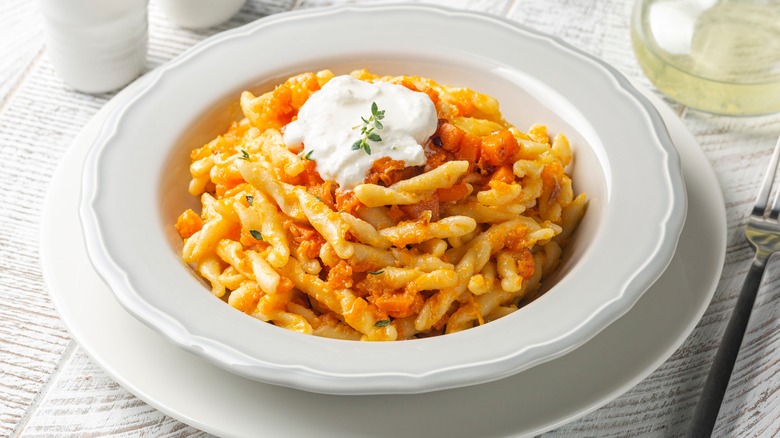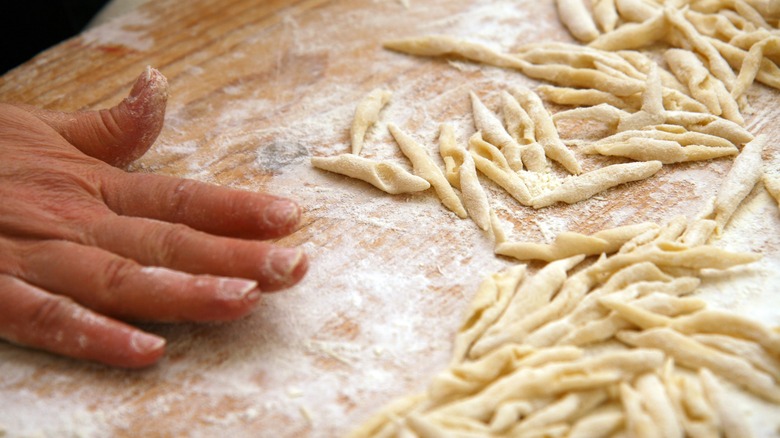Strozzapreti Is The Unique Pasta Shape That May Have A Dark History
For much of Italian history, pasta and politics have gone hand and hand. The Manfredi Lunghi pasta shape is named after a 13th-century Sicilian king. When one Italian Futurist, Filippo Tommaso Marinetti, satirically suggested that pasta was an outdated dish in the early 1900s, it inspired such an impassioned uprising as to evoke a small Civil War. Today, we're deep-diving into another perhaps lesser-known pasta shape inspired by historical and social influences. Introducing strozzapreti (aka lunghetti), which resembles a more twisted cavatelli, and is made from a simple combination of flour and water — no eggs.
Before the Kingdom of Italy was established in 1861, Emilia-Romagna belonged to the Church-State. Priests regularly showed up door-to-door to collect taxes, typically around lunchtime, and always demanded to be fed by whatever household they happened to be visiting. Under the oppressive Papal State, if the northern Italian people couldn't afford to feed them, priests would sometimes confiscate their eggs as an alternative payment, leaving the people to figure out how to make pasta with just flour and water — and they weren't happy about it.
Now that they had their eggs swiped, they were naming their new flour-and-water pasta "strozzapreti," Italian for "priest strangler." Per the lore, the hope was that whenever priests visited households in Emilia-Romagna, they would be served the pasta and choke on it. The twisted, elongated shape of the strozzapreti might have been designed to resemble the ropes that 19th-century Italians used to hang criminals.
How to make strozzapreti at home
This isn't the only theory as to how strozzapreti's dark name originated. Another story says that a traveling priest once stopped at an Italian convent and demanded to be fed. He was so hungry that when the sisters fed him the pasta, he ate it so quickly that he choked, and was swiftly revived by a sisterly smack to the back of the head. The original recipe might have also been inspired by necessity in the winter months when chickens lay substantially fewer eggs.
Today, strozzapreti is an empowering reminder of the Romagna region's anarcho-socialist history — and it's also a great way for novice foodies to try making their own pasta. Strozzapreti is a simple combination of semolina flour, all-purpose flour, salt, and warm water — no pasta-maker necessary. To make a batch, the dough is assembled, sliced into thin strips (a pizza cutter works well for this step), rolled by hand, twisted, and boiled. The result is a chewy, spongey bite (as long as you remember to sift the flour first). Individual pasta strands can be varying lengths, but consistently remain roughly 3 millimeters thick.
Since strozzapreti is traditionally a working-class dish, it was typically dressed in olive oil and Parmesan. Now, modern home cooks can get creative and serve their strozzapreti with whatever ingredients they prefer. Roasted tomatoes, mushrooms and ricotta, clams and tomato sauce, sausage and broccolini, zucchini and squash blossoms, or wild boar ragù would all make delicious pairings.

